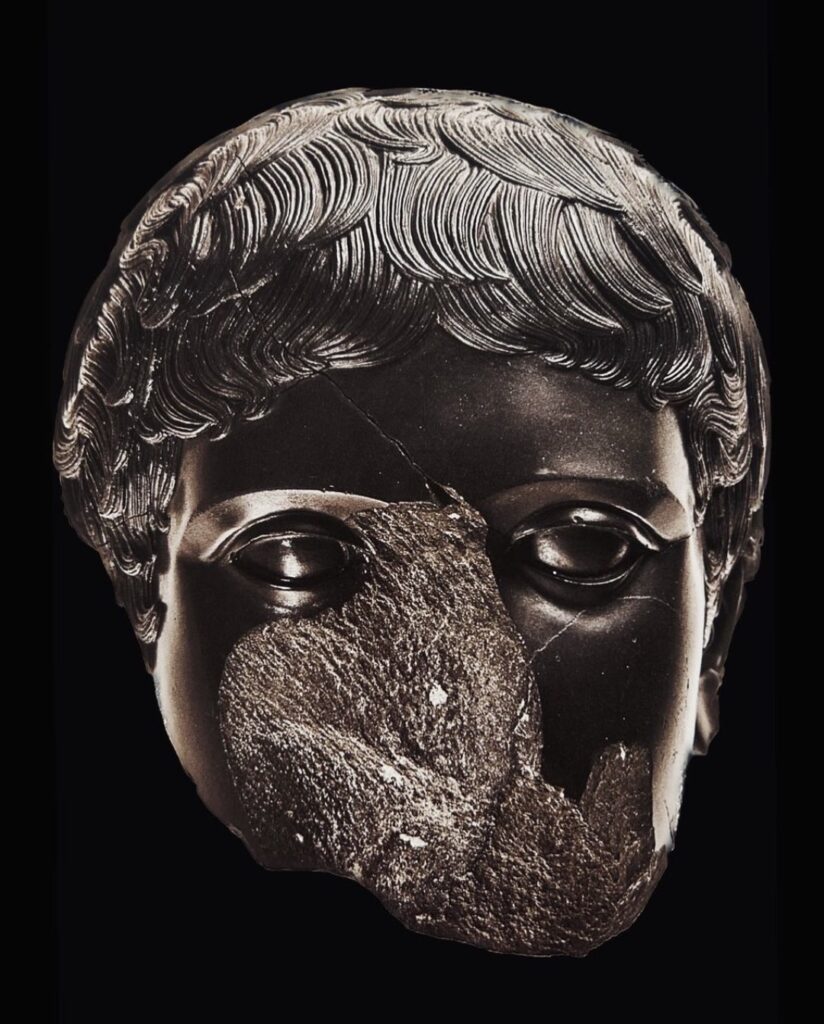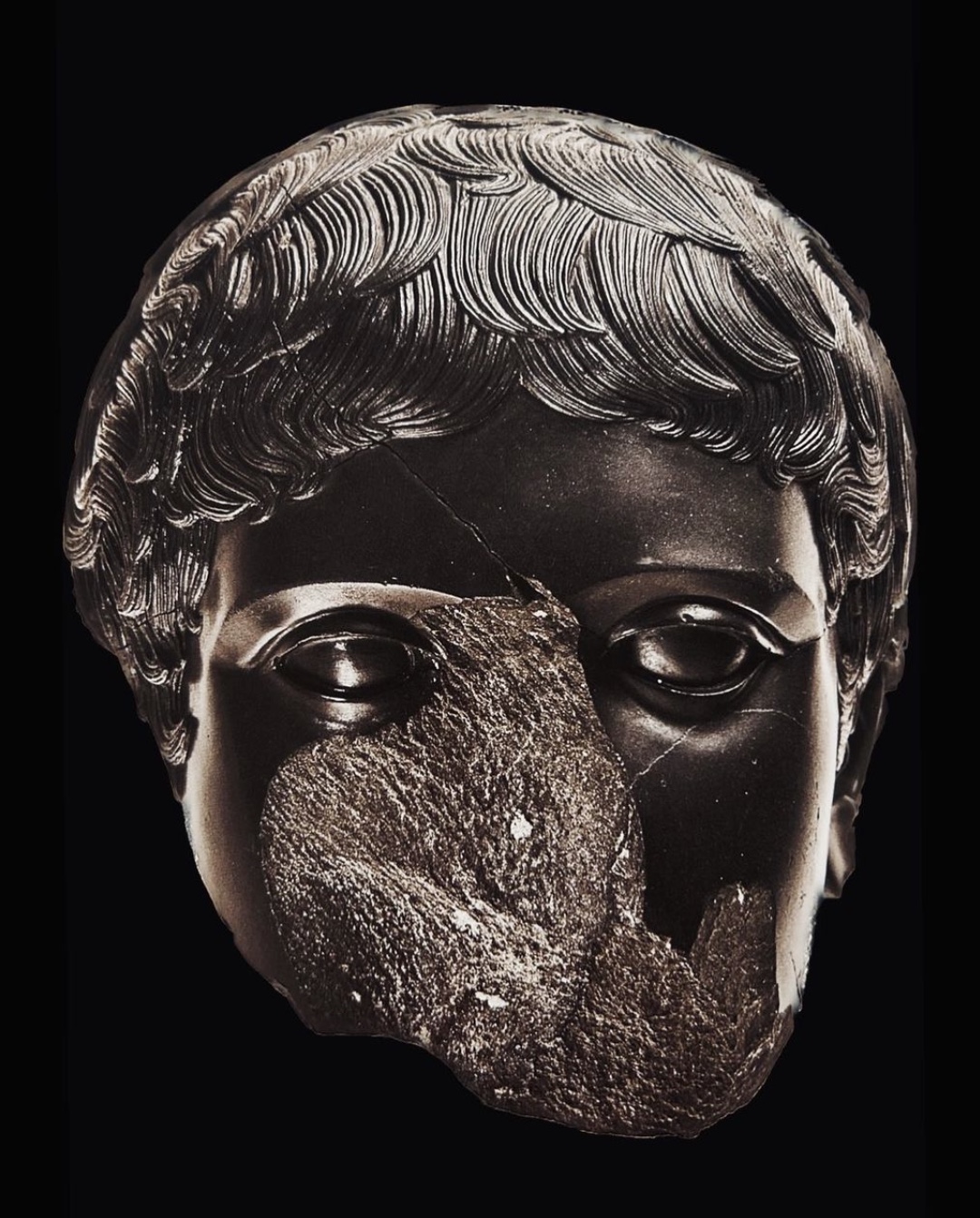Well I woke up thinking of bronzes today but this marvelous head wormed its way into my imagination. The trick is, it’s not bronze at all, but rather diabolically hard, dark stone.
Black basalt (basanite), a fine-grained volcanic stone, was quarried in Egypt from the ‘Mons basanites’ deep in the Eastern desert. While it was used widely in Egyptian sculpture it was not until the surge of Egyptomania that swept the Late Roman Republic that it enjoyed any popularity there, with the sheer difficulty in carving it (as compared to marble) and expense in transporting it back to Rome meant its use was never widespread.

Although fragmentary, this basalt head is one of the finest to survive. It shows an idealised head rather than a ‘real’ individual, harkening back to a 5th century B.C. Polykleitan original. The precise arrangement of hair locks were identical to the famed bronze “Idolino” now in Florence, likely coming from the same sculptural prototype. The exceptionally fine carving piqued the interest of J.J. Winckelmann (the legendary 18th century German aesthete and classicist hailed as the ‘father of art history’) and the head was part of his personal collection, discussed in his 1764 publication.
Intrinsically, microcrystalline structure of the stone lent itself to a nearly touretic level of crisply carved edges and details – somewhat unlike a certain softness often found in sculpted marble. This alone links the result aesthetically with bronze. But is that lustrous sheen of the polished surface that propels the result into a sort of medium-bending mirage. Patinated bronze must have been the visual goal for a Roman clientele willing to pay dear for such a clever, effective illusion.




